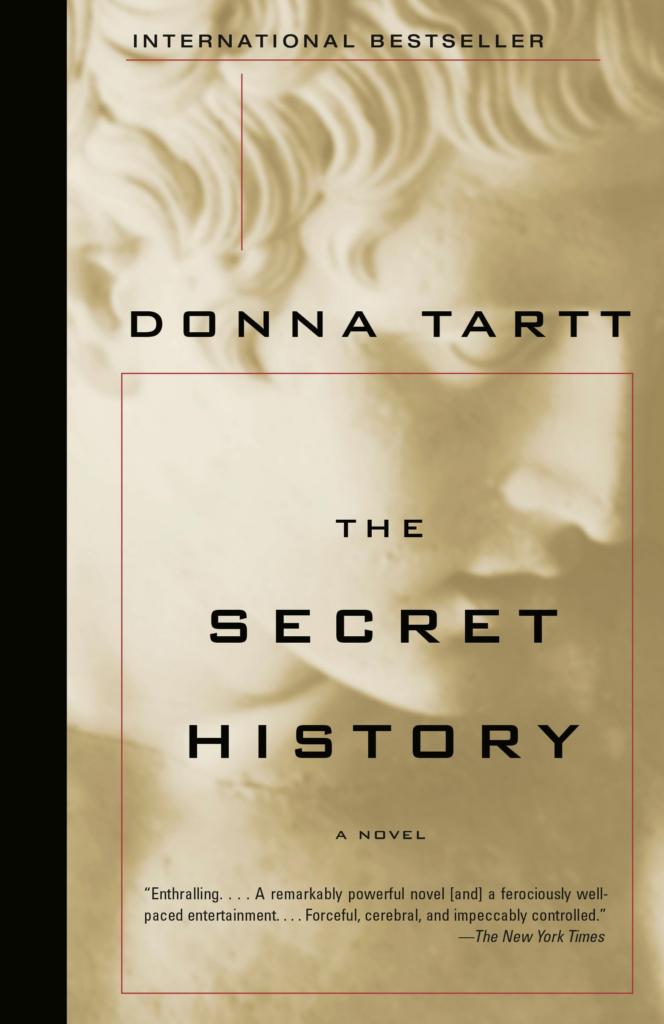There’s No Fast Fashion in Fiction: Personal Style and Influence
Blog Writer // Tehya Tenasco
When you look up “books about fashion” what fills your screen is either self-help articles, advice books, or nonfiction titles providing information about the fashion industry and big name designers—nothing combining fictional storytelling with the substance of style at all. As a writer, I was thoroughly surprised, but also extremely curious as to why others don’t see that fashion and fiction is a no-brainer duo.
These search results sparked a couple questions into my mind. How does imagining our favorite character’s fashion style in books enhance the reading experience? Are words on a page enough to influence style in the real world? Why is a fashion aesthetic so important to fiction anyways? To this, I thought it obvious to break down the most popular aesthetic associated with literature: Dark Academia.
Whether you’re a fashion enthusiast or just someone who enjoys dressing up, you’ve definitely heard of the Dark Academia aesthetic from apps such as TikTok or Pinterest. But what actually makes up this style, and where do we see its influence translated through written word?

It’s been over a year since I read Donna Tartt’s The Secret History, but I fear returning to it is necessary for this question specifically. If you’ve heard enough discourse and “blah blah blah” about this book, please take everything I’m about to say and apply it to another book you find more gripping. It might be a fun brain exercise on a rainy day or when spacing out in your tedious general elective class!
For more cohesive organization, I decided to split my research into four sections:
- Section 1: Which Character Is The Most Stylish (in your mind)?
- Section 2: How Does The Character’s Style/Aesthetic Influence The Narrative?
- Section 3: How Is Aesthetic Translated Into The Real World?
- Section 4: Why Does Any Of This Matter As A Reader?
Section 1: Henry Winter
If his name didn’t suggest enough, Henry Winter encapsulates all that is dim, cold, ancient, and abnormal. As a very obvious winter pallet, Henry is described as pale, tall, broad shouldered, and extremely serious looking. With a constant stern expression, cooler color palette, and blocky build, Henry’s personal style is already suggested to be something classical and academic, with fine tailoring being a valuable aspect of his clothing. Although many of the other characters in The Secret History share similar style characteristics, Henry is an excellent case when studying the correlation between physical appearance and personality and behavior. Which leads into the next section…
Section 2: Mystery in Black Overcoats
Henry Winter is soloed out almost immediately from the rest of the characters. His rather mature choice of clothing, combined with his stark and serious attitude marks him as an abnormal character, especially when you factor in his age and identity as a college student and NOT an esteemed academic with a rich career to support his behavior, and the entirely-too-serious manner in which he carries himself. So what is it about Henry’s personal style that makes him such an intriguing character to Richard, the readers, and to the narrative? In my opinion, it’s Tartt’s writing of his persona as trope-ish and severely intentional that paints him as a perfect reflection of the world Richard finds himself in. If Henry were to be any less of himself appearance-wise, this fictitious spell would be broken, and the reader would imagine Henry as any old pretentious college student. It’s because of his thoughtful outerwear and put-together style that the narrative becomes more intense, more real though every descriptive detail.
Section 3: Desire for Drafty Libraries
Even if you haven’t read the novel, the “mysterious academic clad in black, flowy overcoats” trope is commonly associated with the story and its characters. Scroll through BookTok for no more than five minutes and you’re sure to come across a collage of figures in dark coats with white, collared shirts running in snow and old libraries with shelves reaching to the heavens, accompanied by Tartt’s reading of the novel’s opening paragraph.

The aesthetic of the novel is made perfectly clear with these moodboard-esque videos, working to bring returning readers back into the cool autumns and cold winters of Hampden College, while simultaneously introducing new readers to the haunting and mysterious visuals of the novel and its characters. The Dark Academica aesthetic is translated in a way entirely unique to those who know of the story and it’s themes, with black overcoats and clean haircuts being synonymous with those channeling the quiet intensity of Henry Winter in their day and day, and oversized, knitted sweaters and monocles in reference to the eccentric Francis Abernathy. These desires to be closer to our favorite characters and their stories are best expressed physically through styling articles of clothing together that remind us of their vibes.
Section 4: Okay…Why Should I Care?
Style is forever. Who was it that said that again? Well, that doesn’t really matter in this case. What does matter however, is the urgent need to preserve personal style. So much of today’s “fashion” is fast, easy, uniform, and to be honest, quite boring and uninventive. Developing and nurturing personal style is entregale to the creative world, which is threatened now more than ever before. Instead of purchasing another tank top with a stolen piece of artwork cheaply printed onto it, consider investing in yourself, and purchasing clothes thoughtfully. If you’re a writer like myself, or an avid reader, analyze what it is that makes your favorite characters intriguing and enjoyable to read about, and buy pieces according to those aspects. Combining both fashion and fiction into one creative outlet provides creatives with a new way to explore self expression and honor inspiration in a fun, inventive, and even therapeutic way!


